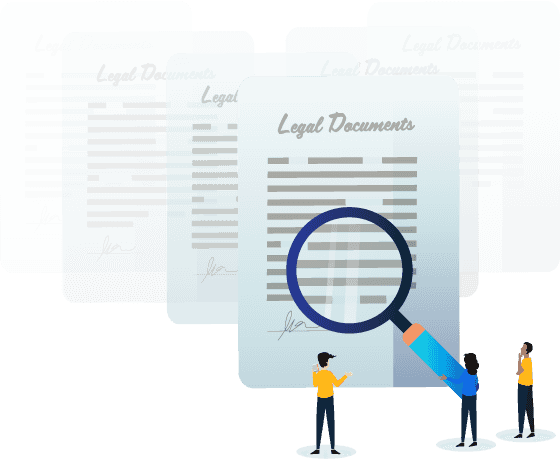Tax avoidance has become a prominent issue in the world of business. In the past, private companies were channelling tax-free distributions to their shareholders or their associates in the form of loans. These loans would be disguised as distributions of profit to effectively allow shareholders or their associates to have access to the corporate tax rate. Division 7A of Part 3 of the Income Tax Assessment Act 1936 (Cth) operates to prevent these tactics from occurring. This article will explore the mechanisms of a Division 7A loan agreement and how they affect corporate transactions. Secondly, outlining some steps to check if you’re Division 7A compliant. Lastly, this article will highlight which transactions and other circumstances Division 7A of the Income Tax Assessment Act excludes .
What is a Division 7A Loan agreements?
Scope
Shareholders or their associates have the capacity to borrow money from their respective companies. However, classifying their repayments is a crucial aspect of a company’s internal auditing procedure. Division 7A loan agreements ensure that the amount a shareholder borrows is not part of their assessable income for the tax year. Instead, the payments made to the shareholder are classified as an ‘unfranked dividend’. This means that the dividend distributed to a shareholder does not have a tax credit attached to it. As a result, a shareholder must pay a higher tax amount for the payment received. For more on dividends and how they work, check out our guide on ‘What are Dividends?’.
Defining Division 7A Loan Agreements
Division 7A defines a ‘loan’ broadly to include:
- An advancement of money;
- A provision of credit or any other form of financial accommodation;
- A payment for a shareholder or their associate, on their account, on their behalf, or at their request if they have an obligation to repay the amount; and
- A transaction that is the same as a loan of money.
Furthermore, a loan will be deemed to be a dividend if it is made to a shareholder or their associate unless it is expressly or impliedly excluded by other sections of Division 7A.
An ‘associate’ is broadly:
- A spouse, child or relative of the shareholder
- A trust in which the shareholder or associate is a beneficiary; and
- Lastly, a company under the control of the shareholder or their associate, or a partner in partnership with the shareholder.

Get your Loan Agreement now for free
Set out and clarify the terms of your loan with our legally-binding Loan Agreement.
How to be Division 7A compliant
Generally, a Division 7A loan agreement must have the following:
- Be in writing;
- Identifies the lender and borrower;
- Specifies the loan amount;
- Records the interest rate;
- Date of repayment;
- Term of the loan; and
- Lastly, minimum repayment terms.
A loan agreement under Division 7A cannot be longer than 7 years. However, a loan secured by real property may exempt a shareholder from this condition. Additionally, the parties must sign and date the loan agreement before lodging the private company’s tax return.
Moreover, assessing whether a loan is compliant with Division 7A requires an examination of the following questions:
- Has the private company made a loan to an applicant during the current year?
- Is the person a shareholder or their associate?
- Has the loan been fulfilled by the lodgement day?
- Does Division 7A exclude the loan specifically?
- What is the deemed dividend amount?
- What is the impact of the private company’s franking account?
- Lastly, does the loan given rise to a fringe benefit tax liability?
For more on shareholder income and profits, check out our guide on ‘Salaries, Dividends and Drawings (2022 Update)’.
Exclusions Under Division 7A
The loan cannot qualify as a dividend and therefore will not attract Division 7A of the Act if any of the following apply:
- If the loan is for another company and they are not acting as a trustee.
- If the payment is included in a shareholder’s or their associate’s assessable income for the taxable year.
- Where the loan is made in the ordinary course of business or applies to similar loans to entities at arm’s length.
- The loan was created before December 4th 1997 and no variations of terms of amount have been made since then.
- Where minimum yearly repayments are not met as a result of circumstances beyond the shareholder’s or their associate’s control.
For more on loan agreements, check out our guide on ‘How to Create a Loan Agreement’.
Summary
- Loans made by private companies to their shareholders is regulated by Division 7A of the Income Tax Assessment Act 1936 (Cth).
- Division 7A operates to ensure payments received by shareholders are accurately classified to prevent tax fraud and proper auditing procedure.
- A loan agreement between a private company and shareholder or their associate will be regarded as an unfranked dividend in order to attract Division 7A of the Act.
Want to know more?
- Want to get started on creating your own Division 7A Loan Agreement? Check out our template here.
- If you are concerned about your agreement with an entity or private company, consider consulting one of our lawyers for a legal advice plan here.
- Interested in pursuing a matter? Find the lawyer fit for you with a free quote here.




